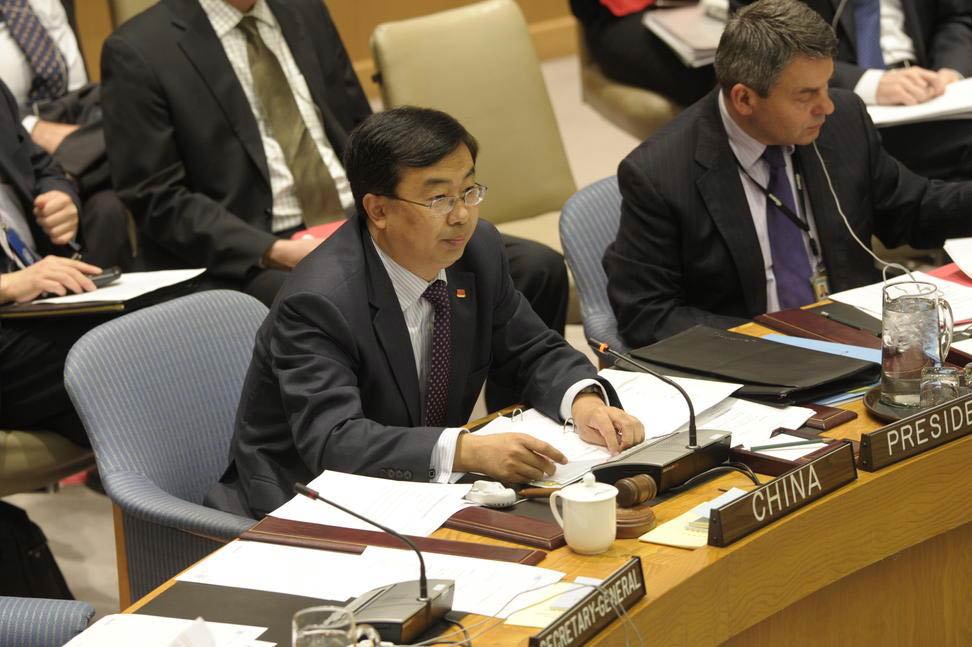
The United Nations has developed a strategy for addressing the crisis created by the Lord’s Resistance Army, or LRA, that highlights the obstacles constraining ongoing efforts and details five areas of strategic support. The strategy, endorsed by the U.N. Security Council, follows two weeks after the release of the secretary-general’s report on the LRA warning that current efforts are under-resourced and lack regional cooperation.
Developed in coordination with the African Union, or A.U., and the countries affected by LRA violence, the U.N. regional strategy delves deeper into the gaps and challenges facing regional and international initiatives aimed at ending the LRA. Some of the major noted obstacles include: inadequate gathering, sharing, and analysis of intelligence about LRA movements and threats; insufficient mobility assets to enable troops pursuing the LRA’s senior leadership and protecting civilians to respond rapidly to intelligence reports; the need for the forces involved to be trained on respect for human rights, international humanitarian law, and protection of civilians and on not further harming civilians affected by the LRA; and inadequate initiatives to encourage combatants to escape from the LRA and to repatriate, rehabilitate, and reintegrate them. The strategy also referenced the need for more troops.
It then calls on the U.N., the A.U., the LRA-affected countries (Uganda, the Democratic Republic of Congo, South Sudan, and the Central African Republic), and international donors to provide assistance in five areas of strategic support:
- operationalization of the A.U. initiative against the LRA, including the initiative’s military component, the Regional Task Force;
- enhancement of civilian protection;
- expansion of disarmament, demobilization, repatriation, resettlement, and reintegration, or DDRRR, programs;
- promotion of a coordinated humanitarian and child protection response; and
- peacebuilding, human rights, rule of law, and long-term development in order to enable governments of LRA-affected countries to establish authority across their territory.
Specifically, the strategy calls on U.N. actors to encourage the governments involved to provide more troops to the Regional Task Force to reach its 5,000-troop target, in order to more effectively arrest the top commanders and protect civilians. To address the need for mobility assets, the strategy urges that international partners meet regularly to coordinate and mobilize the resources they each have at their disposal. It calls on the U.N. special representative to the secretary-general for Central Africa and the A.U. special envoy on the LRA to engage the four affected countries to build consensus on a unified approach and collaborate, particularly on information-gathering and -sharing. The strategy notes the need for U.N. actors to encourage the troops to prioritize civilian protection while engaging in operations to apprehend LRA leaders and to conduct operations in a manner that minimizes risk of harm to civilians, to support the development of the ‘A.U. Strategic Framework for the Protection of Civilians in LRA-affected Areas,’ and to conduct regular assessments of the military operations to ensure compliance with international standards.
The promotion of defections from the LRA would be enhanced by identifying greater synergies between military and DDRRR operations including through establishing assembly points for combatants to surrender, by developing procedures for repatriation and reintegration, by setting up mechanisms for coordination, and by prioritizing DDRRR initiatives. The strategy encourages the affected countries to put in place policies that promote defections, including through the enactment of amnesty laws in line with international standards (this is all the more relevant given the Ugandan government’s recent move to disembowel the crucial Amnesty Act).
The strategy also calls for international partners to support affected countries in improving infrastructure, particularly roads, bridges, and airfields to improve accessibility and promote economic activity, as well as in sustainably funding recovery initiatives.
Meeting on June 29, the U.N. Security Council issued a presidential statement welcoming the regional strategy. The council called on the affected countries to renew and strengthen their collaboration to end the LRA. It urged the affected countries, the A.U., and the international community to provide the necessary resources to implement the strategy. The council also requested that the secretary-general submit an additional report about the LRA and the work of the U.N. Office for Central Africa by November 30, 2012.
Ultimately, the success of this strategy will hinge on the commitment and engagement of the affected countries and international partners, particularly the United States, which the U.N. special representative for Central Africa, Abou Moussa, noted in remarks to the Security Council:
The strategy must only represent the beginning of vigorous attention by the Council to address the LRA issues, in order to put an end to these atrocities once and for all. Its successful implementation will depend on the level of cooperation and engagement among the affected countries and resource mobilization to address funding gaps.
Enough’s research has unearthed many of the same obstacles identified in the U.N. regional strategy. Chief among these are the need for more capable and committed troops, enhanced intelligence and transportation capabilities (such as helicopters), access for the Ugandan army to operate in Congo (particularly critical in light of the reported transfer of the U.S.-trained 391st Congolese army battalion from LRA-affected areas to eastern Congo) and all other LRA safe havens, maximizing opportunities to promote defections, and improved infrastructure. In order for the new U.N. regional strategy and the U.S. military advisors’ mission to succeed, the U.S. should urgently work to address these fundamental challenges.
Photo: Chinese Ambassador Li Baodong precides over Security Council meeting (U.N.)

